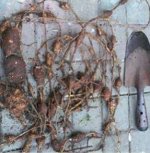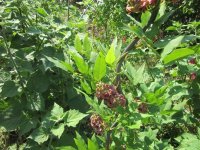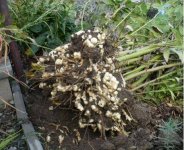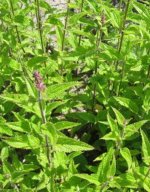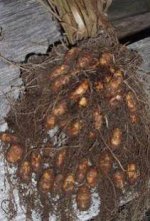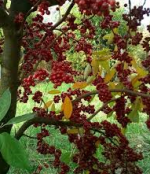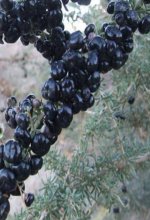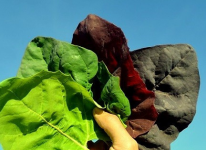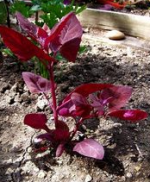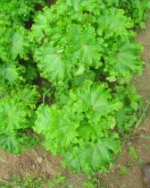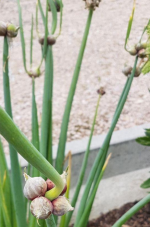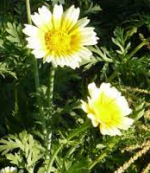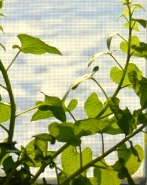I will share a few of my favorite species
Indian Potato (Apios americana)
This vining plant is a perennial. A relative of peas, its vines can reach ten feet long. The flowers it produces are similar in appearance to those of wisteria.
In early spring, tubers two to three inches deep are planted and mulch to stop competition from weeds and grass. Provide the young shoots with something to climb on. After one year of growth, several one-inch-thick tubers can be harvested from each plant. The tubers form in a long rhizome, each one attached to the next. When harvested, the smaller tubers are often saved to start the next year’s crop. Larger ones can be replanted or cooked and eaten. It will grow in sun to partial shade and needs moist conditions, preferring sandy or gravelly loams with some humus added.Temperature-wise, it can tolerate up to subtropical heat levels during the summer months. In the winter, tubers buried in the ground under mulch will survive even in snowy areas
The tubers can be used in soups and stews or fried like potatoes, the cooked seeds can also be eaten.
Indian Potato (Apios americana)
This vining plant is a perennial. A relative of peas, its vines can reach ten feet long. The flowers it produces are similar in appearance to those of wisteria.
In early spring, tubers two to three inches deep are planted and mulch to stop competition from weeds and grass. Provide the young shoots with something to climb on. After one year of growth, several one-inch-thick tubers can be harvested from each plant. The tubers form in a long rhizome, each one attached to the next. When harvested, the smaller tubers are often saved to start the next year’s crop. Larger ones can be replanted or cooked and eaten. It will grow in sun to partial shade and needs moist conditions, preferring sandy or gravelly loams with some humus added.Temperature-wise, it can tolerate up to subtropical heat levels during the summer months. In the winter, tubers buried in the ground under mulch will survive even in snowy areas
The tubers can be used in soups and stews or fried like potatoes, the cooked seeds can also be eaten.

